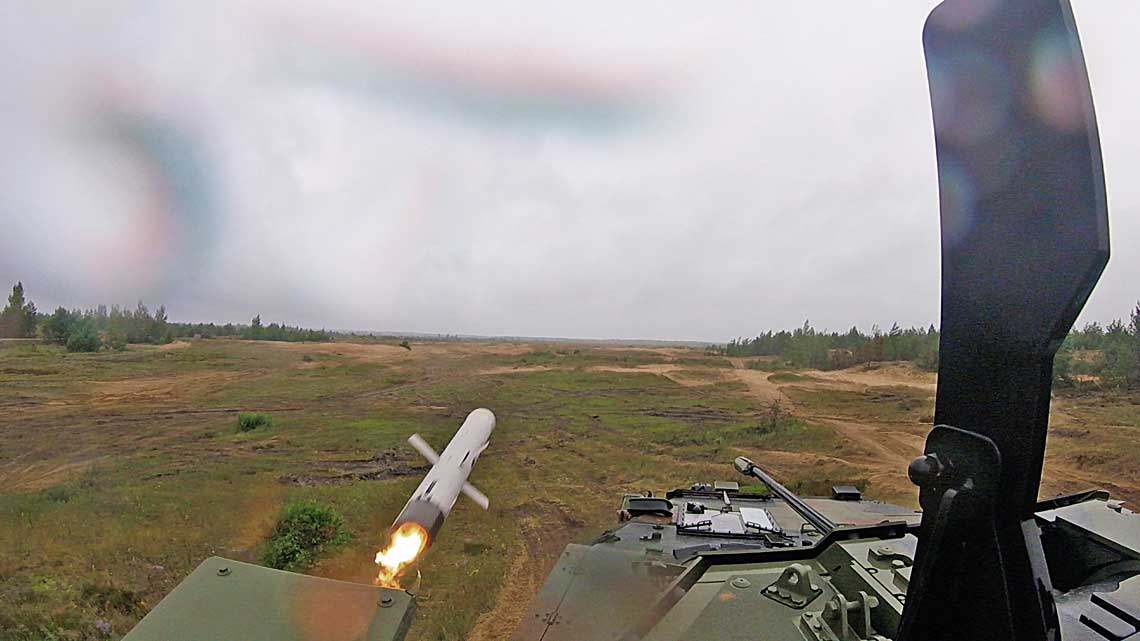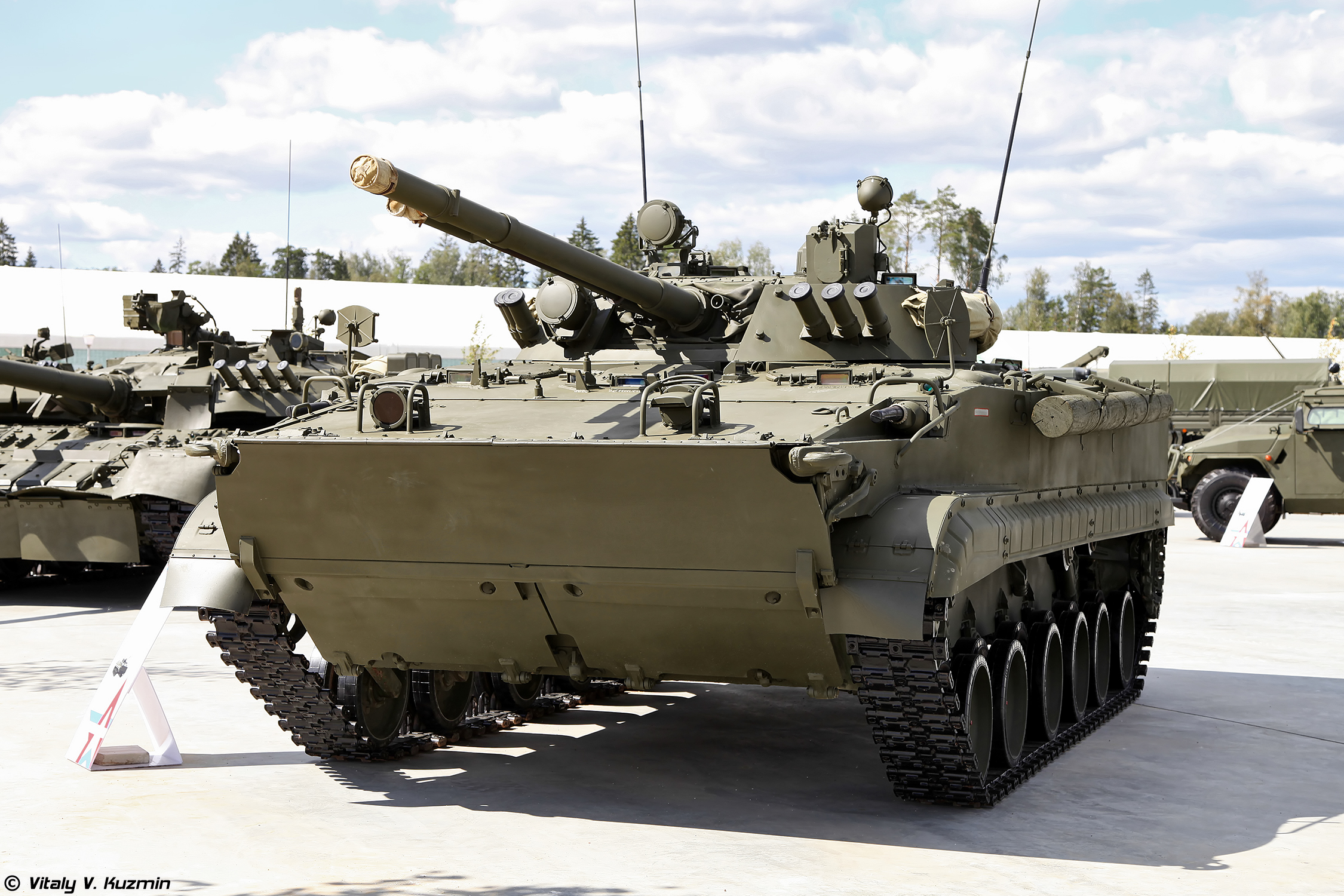
Wolverine and Spike - The Neverending Story Part 1

Launch of a Spike-LR missile from an Italian VBM Freccia wheeled combat vehicle during a joint exercise with Canadians at a training ground in Latvia in 2017.
The history of arming Rosomak armored fighting vehicles with anti-tank guided missiles goes back more than 15 years and dates back to the beginning of the Wheeled Armored Transporter program. Despite the complete readiness of the industry to implement this project, in accordance with the requirements of the military, the systematic confirmation of the Ministry of Defense over the years of readiness to purchase such machines and include them in the list of priorities in the subsequent technical modernization plans and even preliminary negotiations of the Armament Inspectorate with work contractors related to the retrofitting of combat "Rosomaks" with launchers and other elements of the Spike-LR system, the conclusion of the contract is still being postponed. Back in July last year, the then leadership of the Ministry of Defense stated that this would be done before the end of 2017.
The procedure for retrofitting the Rosomak armored personnel carrier with the Hitfist-30 turret system with the Spike ATGM launcher is at the stage of negotiations with the contractor - such an answer to the question about the progress of the program was provided to the media by the Ministry of National Defense in May this year. The enterprise was planned – in its original form – as early as 15 years ago, and an invitation to negotiations in accordance with the currently valid revised Plan for the Technical Modernization of the Polish Armed Forces for 2017-2022 was sent by the Armaments Inspectorate Rosomak SA in November 2016.
First fittings
As already mentioned, the project of re-equipping (initially arming) the Rosomaks with the Spike-LR anti-tank missile system has a long history. It should also be linked with the Program for the Reconstruction and Technical Modernization of the Armed Forces for 2001-2006 adopted in the spring of 2001, which, as one of the priorities associated with increasing the combat capabilities of the Polish Army, assumed the strengthening of the anti-tank defense system (incl. purchase of new ATGMs), as well as tactical mobility of ground units, incl. through the purchase of a large number of wheeled armored personnel carriers (APCs), including those capable of supporting mechanized units with fire. Hence, in the requirements for the combat version of the armored personnel carrier there was a requirement to integrate the anti-tank guided weapon system with the combat version of the vehicle (wheeled infantry fighting vehicle). Initially, this was a general provision that could only be clarified after July 26, 2002, when the tender commission recommended the Israeli Rafael Spike-LR missile for purchase. Although the official contract for the purchase of this system was awarded on December 29, 2003, at the time of the announcement on December 22, 2002, the decision was made to select a vehicle from the Finnish company Patria Vehicles Oy, whose local partner was Wojskowe Zakłady. Mechaniczne SA from Siemianowice Silesian (now Rosomak SA), announced its intention to assemble
on the part of combat vehicles equipped with Oto Melara Hitfist-30P turrets (currently
Leonardo Defense Systems Division) of the Spike-LR missile system.
This intention was confirmed by the content of the contract for the supply of 690 KTOs, which was signed on April 15, 2003. He announced that out of the planned 313 KTO combat units with Hitfist-30P turrets, 96 would receive Spike-LR ATGM launchers. , i.e. one car in a platoon (with a support group). However, in the end, like many of the options planned at this stage, combat vehicles in this configuration were never created, and none of the combat Rosomaks delivered in 2004-2013 received a guided missile weapon system at the production stage. This was motivated first by technical and budgetary considerations, and then - after Oto Melara's successful integration of the Spike-LR system with the Hitfist family turret at the request of the Italian Ministry of Defense (more on that later) - only financial.
spy bus
Despite the refusal to integrate Spike-LR ATGMs with Hitfist-30P turrets at the stage of their production in Italy, and then under license in Poland, sets of anti-tank missiles soon hit the Rosomaks, specifically in their landing bays. In November 2005, WZM SA signed an agreement for the development and supply of transporters for the transport of service sets of Spike-LR ATGMs. They had to be created by reconstructing the unfinished ones, due to the delay in the program, and then completely abandoning the armored personnel carrier with a remote-controlled weapon position (interestingly, 30 of these armored personnel carriers, in the Rosomak-2 version, were to be used to transport anti-tank systems), basic version machines. The alteration was not complicated and was limited to changing the method of mounting equipment in the chassis compartment: two landing seats were removed from each side closer to the middle of the vehicle, and in their place they placed KLU (Command-Launch Unit) and a tripod in a case. On both shelves above the wheel arches, holders were mounted for a total of four ATGM containers (two on each), and four more - in a vertical position - could be transported in holders on the cover of the filtration and air conditioning system on the port side, in the central part of the car.
In 2006, a prototype machine was created, armed with 12,7 mm fiberglass on a straight turntable and having a different arrangement of the internal space of the transport compartment than described above. After the factory and military tests of the vehicle, its final configuration was established (including the abandonment of weapons in the MGM), and the plants in Semyanovitsy began to re-equip the base transporters for this type of vehicle. In total, 2007 Rosomak-S units were built in 2008-27, as they received such a designation, although the name "spikebus" was used in the installations. These machines were supposed to be a temporary solution and remain in service until Rosomak combat installations equipped with the Spike-LR system appeared in the units. They were used for almost a decade, but were recently retired and sent to Rosomak SA for conversion into specialized versions of the vehicle.
italian track
In 2006, the Italian company Oto Melara, together with its partners, initiated a program for integrating the Spike-MR / LR system with the Hitfist-25 turret, on the basis of which the Hitfist-30P turret system was developed for the Polish Rosomak, the Italian company Oto Melara, together with its partners, signed contract for the development and testing of a prototype vehicle in an anti-tank version. This was due to the implementation of the Iveco / Oto Melara VBM Freccia wheeled combat vehicles program, of which 253 (172 with Hitfist-25 Plus turrets, 36 with Hitfist-25 Plus turrets and Spike-MR / LR ATGMs, 20 command vehicles, 21 self-propelled mortars 120 mm caliber and four ambulances) was ordered by the Land Forces of the Armed Forces of the Italian Republic with the aim of re-equipping the VCC-2 Pinerolo mechanized brigade, headquartered in Bari, with VCC-XNUMX tracked transporters.

